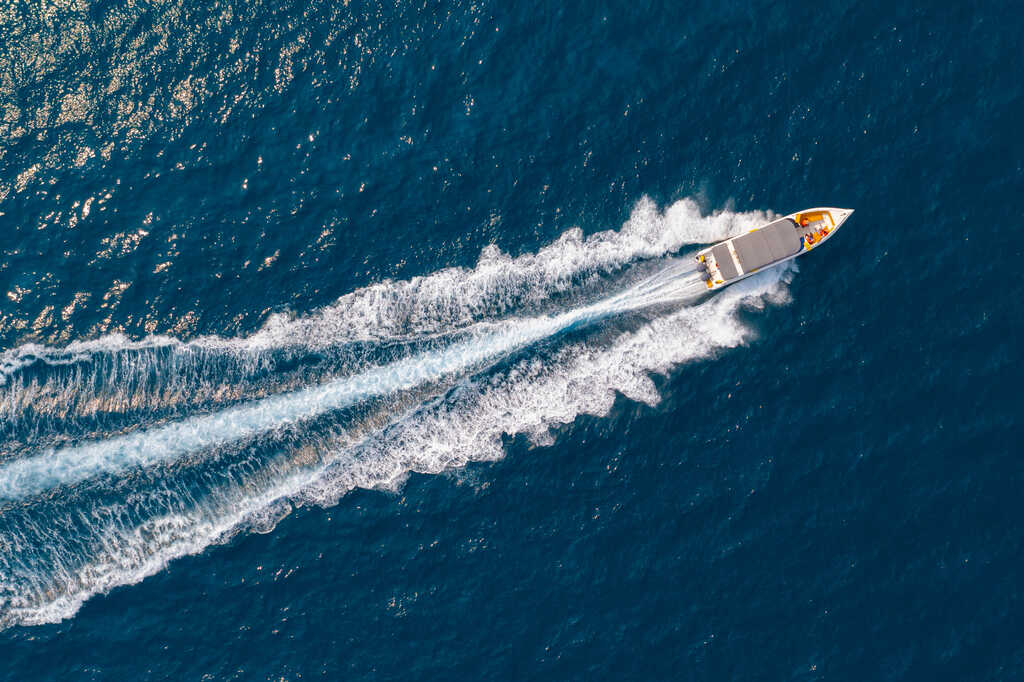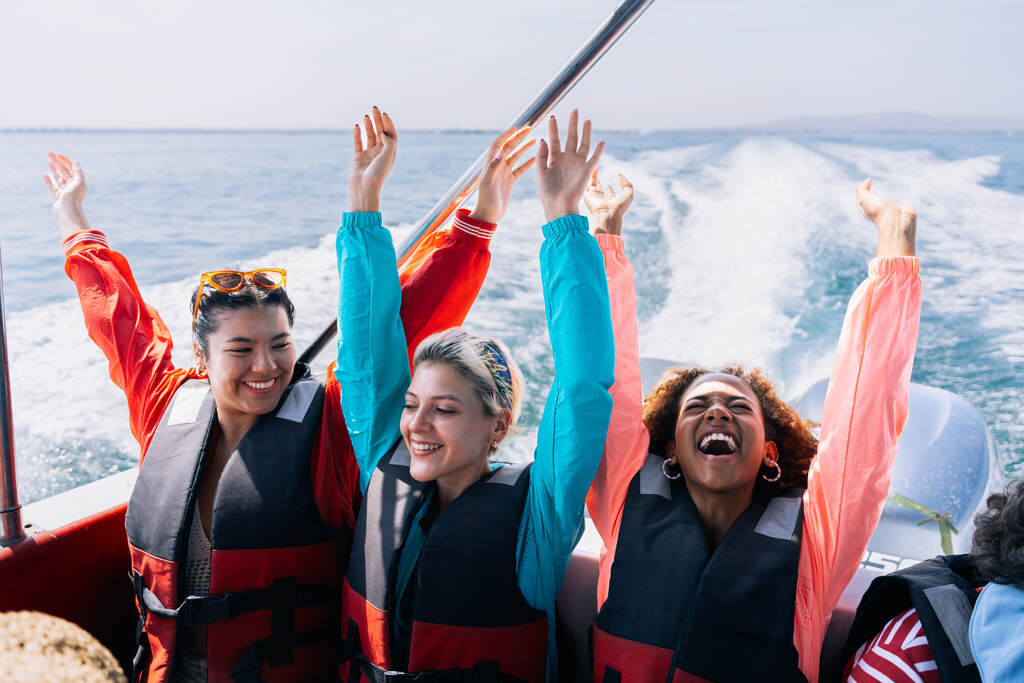LATEST NEWS
How Fast Do Speedboats Go? Everything you need to know

The spray of the water, the sound of a powerful engine, and the feeling of gliding across the surface—this is the essence of luxury powerboating, so the question remaining is: how fast do speedboats go?.
The answer, however, isn’t a single number. It’s a thrilling interplay of engineering, physics, and design. For enthusiasts looking at high-end vessels, like those from NX Boats, performance is just as important as comfort.
In this guide, we’ll explore the factors determining speedboat top speed, differentiate knots vs mph, and explain what truly defines modern performance boats, always with safety concerns considered.
How fast can a speedboat go?
When discussing how fast do speedboats go, the spectrum is incredibly wide. It ranges from agile family bowriders to elite, record-breaking machines.
While some specialized fastest speedboats (like offshore racing boats using turbine engines) can exceed 150 mph (over 130 knots), this is the extreme end of the scale.
For the high-performance leisure market, speeds are more practical yet still exhilarating. The quest for speed is constant, pushing engineering limits, but for most boaters, the focus is on a balance of thrilling speed, predictable handling, and efficient operation.
Average vs top speeds of speedboats
It’s essential to distinguish between average cruising speeds and attainable top speeds. Most recreational speedboats, including luxury day cruisers and bowriders, comfortably cruise between 25 to 35 knots (approx. 29-40 mph).
This is the sweet spot for fuel efficiency and a comfortable ride in light chop. However, when pushed, many of these performance boats can easily exceed 50 knots (57 mph).
High-performance models, specifically designed for velocity, often have a speedboat top speed in the 60-80 knot range (70-92 mph) right off the production line.
When analyzing how fast speedboats go, this separation between average and top speed is key.
What affects speed performance of a speedboat?
Achieving impressive speed isn’t just about strapping the biggest engine to a hull. A boat’s final velocity is a sophisticated balance of multiple factors.
Answering how fast do speedboats go requires looking closely at its weight distribution, the physics of its hull, and the efficiency of its propulsion system, like we’ll see ahead in the next topics:
Weight & load
This is simple physics: the heavier the boat, the more power is needed to move it, and the more water it displaces, creating drag.
This doesn’t just include the boat’s dry weight. Every passenger, gallon of fuel, liter of fresh water, and piece of gear (like coolers or towables) adds up.
A boat running light with only the captain will be significantly faster than the same boat fully loaded for a day out with the family.
Hull type & design
This is perhaps the most critical factor. Hull design and speed are intrinsically linked. Most speedboats use a planing hull.
Unlike a displacement hull (used on trawlers or large yachts) which must push through the water, a planing hull is designed to lift and ride on top of the water at speed.
This transition, known as getting on plane,”drastically reduces hydrodynamic drag (water resistance).
The deadrise, or the V-shape of the hull, also plays a crucial role: a deeper V cuts through waves better for a smoother ride but may create more wetted surface (drag) than a flatter bottom, which is often faster in calm water.
Engine power and propulsion system

Power (HP) is the brute force that overcomes drag. Modern speedboats utilize powerful outboard or inboard (including sterndrive) engines.
But raw horsepower isn’t the only metric. The power-to-weight ratio is crucial. A lighter boat with 300 HP will be much faster than a heavy cruiser with the same engine.
The propulsion system — how that power is delivered to the water via the propeller — also dictates efficiency, acceleration, and the boat’s ability to hook up and transfer power into forward motion.
Understanding engine types and common horsepower ratings
In the luxury speedboat market, outboard engines have become dominant due to their efficiency, ease of maintenance, and incredible power outputs.
It’s common to see high-end boats equipped with twin, triple, or even quad outboard setups.
Common horsepower ratings for performance-oriented boats often start in the 200-300 HP range (often in pairs).
For larger or high-performance models, configurations pushing 400 HP per engine (like the NX62) are increasingly popular, delivering the raw power needed for exhilarating speeds.
Cruise speed vs top speed: what’s the difference?
Speedboat top speed is the absolute maximum velocity the boat can achieve at Wide Open Throttle (WOT).
It’s a thrilling number and great for bragging rights, but it’s not sustainable. Running at WOT burns an enormous amount of fuel and puts maximum stress on the engines.
Cruise speed, conversely, is the optimal speed for normal operation (usually around 70-80% of max RPM).
It offers the best blend of speed, passenger comfort, and fuel economy, allowing you to enjoy the journey without emptying the tank.
Popular speedboat models compared
The market for performance boats is diverse. A 30-foot luxury day boat might prioritize comfort but still achieve impressive speeds, while a specialized go-fast boat sacrifices amenities for pure velocity.
For example, a high-performance center console (like NX 350 Maximus) might pair twin 350 HP engines to reach speeds over 70 mph.
In contrast, a luxury bowrider (like an NX Boats 280 Xtreme) might utilize twin 300 HP engines, providing a perfect balance of social space, luxury, and a thrilling top speed in the 50-60 mph range.
When speed is an advantage?

High speed is a core part of the thrill. It’s essential for water sports like water skiing or wakeboarding, where a consistent, fast pull is required.
Speed is also a practical advantage in leisure boating; it allows you to reach distant destinations — a secluded beach, a waterfront restaurant, or a favorite fishing spot — much faster, maximizing your time on the water.
For those who simply love the feeling of command and performance, speed is the advantage.
When it’s a risk?
With great power comes great responsibility. High speeds significantly reduce reaction time, making it harder to avoid submerged objects, other vessels, or swimmers.
It’s crucial to operate only at speeds that are safe for the conditions (water chop, visibility, traffic).
Furthermore, many inland waterways, marinas, and channels have strictly enforced no-wake zones or speed limits. Ignoring these regulations isn’t just risky; it’s illegal and endangers others.
Fuel consumption at high speeds
The relationship between speed and fuel consumption is not linear; it’s exponential. To go faster, the engine must overcome increasing water and air resistance (drag).
A common rule of thumb in boating is that doubling your speed from a slow cruise to WOT can more than double your fuel consumption (measured in gallons per hour).
Pushing for that last 10% of speedboat top speed might burn 50% more fuel per hour. That’s the trade-off when asking how fast do speedboats go — efficiency is sacrificed for maximum velocity.
Conclusion
So, how fast do speedboats go? As we’ve seen, the answer depends on a sophisticated blend of hull design and speed engineering, engine power, and operational weight.
While the fastest speedboats chase records, the true joy of a luxury vessel lies in accessible, thrilling, and safe performance.
Understanding the difference between a comfortable cruise speed and a demanding top speed allows you to manage your vessel efficiently, balancing adrenaline with endurance.
If you’re looking for a boat that perfectly balances modern design, luxury comfort, and exhilarating performance, we invite you to explore the NX Boats fleet.
Discover engineering designed for enthusiasts. Explore our models.

Um novo mundo está surgindo, e a NX Boats faz parte dessa mudança, estamos revolucionando o design, unindo conforto e modernidade tudo isso por que queremos proporcionar a melhor experiência para quem navega com uma NX.

